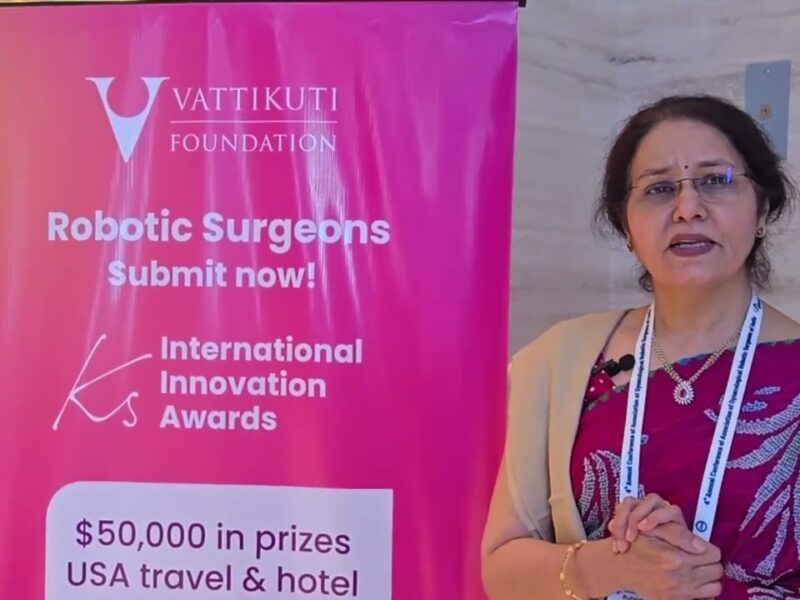Robot assisted video endoscopic inguinal lymph node dissection in node positive groin of carcinoma penis patients
From a KS Robotic Surgery Video Awards entry:
ABSTRACT:
Title – Robot assisted video endoscopic inguinal lymph node dissection in node positive groin of carcinoma penis patients
Authors – Manish Garg, Amitabh Singh, Jiten Jaipuria, Mani Kandan, Sudhir Rawal
ntroduction & Objective – Introduction of minimal invasive techniques like robot assisted- inguinal lymph node dissection (RA-VEIL) for carcinoma penis patients has resulted in significant decrease in post-operative complications and morbidity. But, RA-VEIL has been used for node negative groin in reported case series. Our aim is to present surgical technique of RA-VEIL and its outcome in node positive groins.
Materials & Methods – We started performing RA-VEIL from 2011, and data regarding clinical, surgical and pathological outcomes were maintained in our electronic data base prospectively. Evaluation of carcinoma penis patients was done according to NCCN guidelines. Inguinal lymph node dissection was done in high risk T1b, T2 and greater stage. Patients with 3 cm or less nodal size which are not fixed to underlying structure were offered RA-VEIL. After getting permission from institutional ethical committee, data of clinical and pathological node positive patients of carcinoma penis, those who underwent RA-VEIL from 1st March 2011 to 30th March 2018 were collected. Da Vinci Xi or Si HD was used for RA-VEIL.
Results – Total 23 clinically node positive patients underwent RA-VEIL in defined period. Mean age was 53.7 years. Thirteen patients had clinical N1 disease, and 10 patients had clinical N2 disease. Mean number of lymph node retrieval was 13.4 and 13.6 on right and left thigh respectively. Pathological N1, N2 and N3 disease was present in 13, 5 and 2 patients respectively. Average console time was 72.0 minutes. Mean hospital stay was 3.6 days. Drain was removed on 13.9 mean post-operative day. Mean follow up was 19.6 months. Prolonged lymphatic drainage in 15 patients with 5 patients had lymphocele collection. No local recurrence of disease was reported in any of our patients during follow up.
Conclusion – RA-VEIL is safe and effective treatment option for node positive groin in carcinoma penis patients with less complication and morbidity.
Narrated roboti surgery video, with PPT’s, robotic surgery video clips (labeled as needed), photograph of port placement, 07:57.
Date
August 15, 2020






